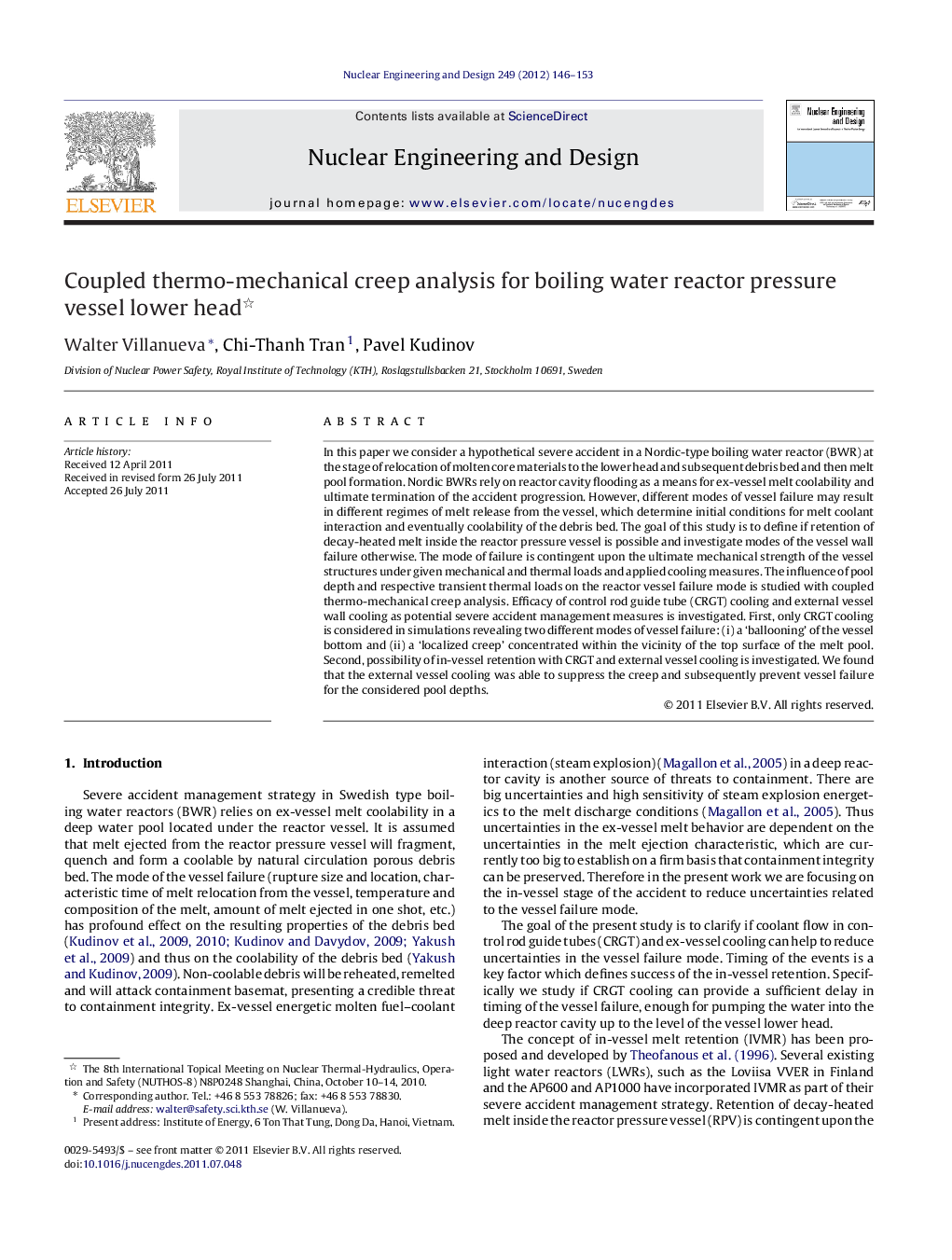| کد مقاله | کد نشریه | سال انتشار | مقاله انگلیسی | نسخه تمام متن |
|---|---|---|---|---|
| 297174 | 511750 | 2012 | 8 صفحه PDF | دانلود رایگان |

In this paper we consider a hypothetical severe accident in a Nordic-type boiling water reactor (BWR) at the stage of relocation of molten core materials to the lower head and subsequent debris bed and then melt pool formation. Nordic BWRs rely on reactor cavity flooding as a means for ex-vessel melt coolability and ultimate termination of the accident progression. However, different modes of vessel failure may result in different regimes of melt release from the vessel, which determine initial conditions for melt coolant interaction and eventually coolability of the debris bed. The goal of this study is to define if retention of decay-heated melt inside the reactor pressure vessel is possible and investigate modes of the vessel wall failure otherwise. The mode of failure is contingent upon the ultimate mechanical strength of the vessel structures under given mechanical and thermal loads and applied cooling measures. The influence of pool depth and respective transient thermal loads on the reactor vessel failure mode is studied with coupled thermo-mechanical creep analysis. Efficacy of control rod guide tube (CRGT) cooling and external vessel wall cooling as potential severe accident management measures is investigated. First, only CRGT cooling is considered in simulations revealing two different modes of vessel failure: (i) a ‘ballooning’ of the vessel bottom and (ii) a ‘localized creep’ concentrated within the vicinity of the top surface of the melt pool. Second, possibility of in-vessel retention with CRGT and external vessel cooling is investigated. We found that the external vessel cooling was able to suppress the creep and subsequently prevent vessel failure for the considered pool depths.
► We consider a severe accident in a BWR with melt pool formation in the lower head.
► We study the influence of pool depth on vessel failure mode with creep analysis.
► There are two modes of failure; ballooning of vessel bottom and a localized creep.
► External vessel cooling can suppress creep and subsequently prevent vessel failure.
Journal: Nuclear Engineering and Design - Volume 249, August 2012, Pages 146–153